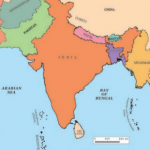TOPIC: Conservation, environmental pollution and degradation, environmental impact assessment Agenda
- It is a non-binding, voluntary action plan for the United Nations, other multilateral organizations and individual governments around the world w.r.t sustainable development that can be executed at local, national and global levels.
- The ’21’ in Agenda 21 refers to the 21st century. It has been affirmed and modified at subsequent UN conferences and Millennium Development Goals (MDGs) have been a special product of Agenda 21.
- Opposition in the USA: during the last decade, opposition to Agenda-21 has increased within the USA at the local, state and federal levels.
- Reason: “It calls for lowering the standard of living for Americans so that people in poorer countries will have more, a re-distribution of wealth”.
-
Follow up:
- Rio +5 (1997): UN held a special session to appraise the status of Agenda-21.
- Millenium Summit: In 2000, 189 member states of the UN agreed to help citizens in the world’s poorest countries to achieve a better life by the year 2015 and world leaders ratified the UN Millennium Declaration which later paved the way to Millennium Development Goals (MDGs).
- Rio +10 (2002), in Johannesburg: World Summit on Sustainable Development (WSSD). The conference affirmed UN commitment to full implementation of Agenda-21.
- World Summit, 2005 &2010: follow up summit meeting to review the progress of MDGs.
- Rio +20 (2012): United Nations Conference on Sustainable Development (UNCSD). Its objectives and outcomes are:
- Objectives: to renew political commitment for sustainable development, assessing the progress and implementation gaps in meeting previous commitments, addressing new and emerging challenges.
- Primary Outcomes: a non-binding document, ” The future we want” which largely reaffirmed previous action plans like Agenda-21 and called for goals to be integrated into UN’s post 2015 development agenda.
- Fundamental changes in the way societies consume and produce. Shifting of taxes so that workers pay less and polluters pay more.
- Commitments to phase out fossil fuel subsidies.
- Other Outcomes: sustainable development goals- a set of measurable targets aimed at promoting sustainable development globally.
- Strengthening UNEP- an international institution that coordinates UN environmental activities, to a UN agency with powers equivalent to other UN bodies.
- Nations agreed to explore alternatives to GDP, as a measure of wealth, that take environment and social factors into account.
- Take action to reduce the incidence and impact of pollution on marine ecosystems.
- New intergovernmental process to produce a report that evaluates how much money is needed for sustainable development and what new and existing instruments can be used to raise more funds.
Read More: Earth Summit, 1992










